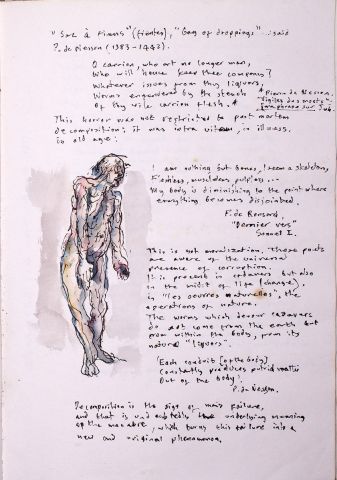“Sac a fiens” (fientes), “bag of droppings”, said P. de Nesson (1383-1442).
O carrion, who art no longer man,
Who will hence keep thee company?
Whatever issues from liquors,
Worms engendered by the stench
Of thy vile carrion flesh.
[Pierre de Nesson. “Vigiles des mortes”. Paraphrase sur Job.]
This horror was not restricted to post-mortem decomposition; it was intra vitem, in illness, in old age:
I am nothing but bones, I seem a skeleton,
Fleshless, muscleless, pulpless
My body is diminishing to the point where
everything becomes disjointed.
P. de Ronsard “Derniers Vers” Sonnet I.
This is not moralization. These poets are aware of the universal presence of corruption. It is present in cadavers but also in the midst of life (change), in “les oeuvres naturelles”, the operations of nature. The worms which devour cadavers do not come from the earth but from within the body, from its natural “liquors”.
‘Each conduit [of the body]
Constantly produces putrid matter
Out of the body.
Pierre de Nesson.
Decomposition is the sign of man’s failure, and that is undoubtedly the underlying meaning of the macabre, which turns this failure into a new and original phenomenon.









